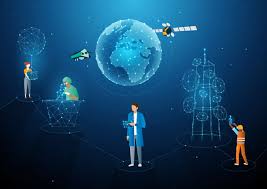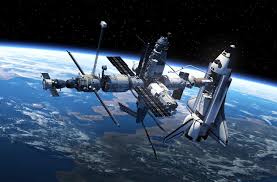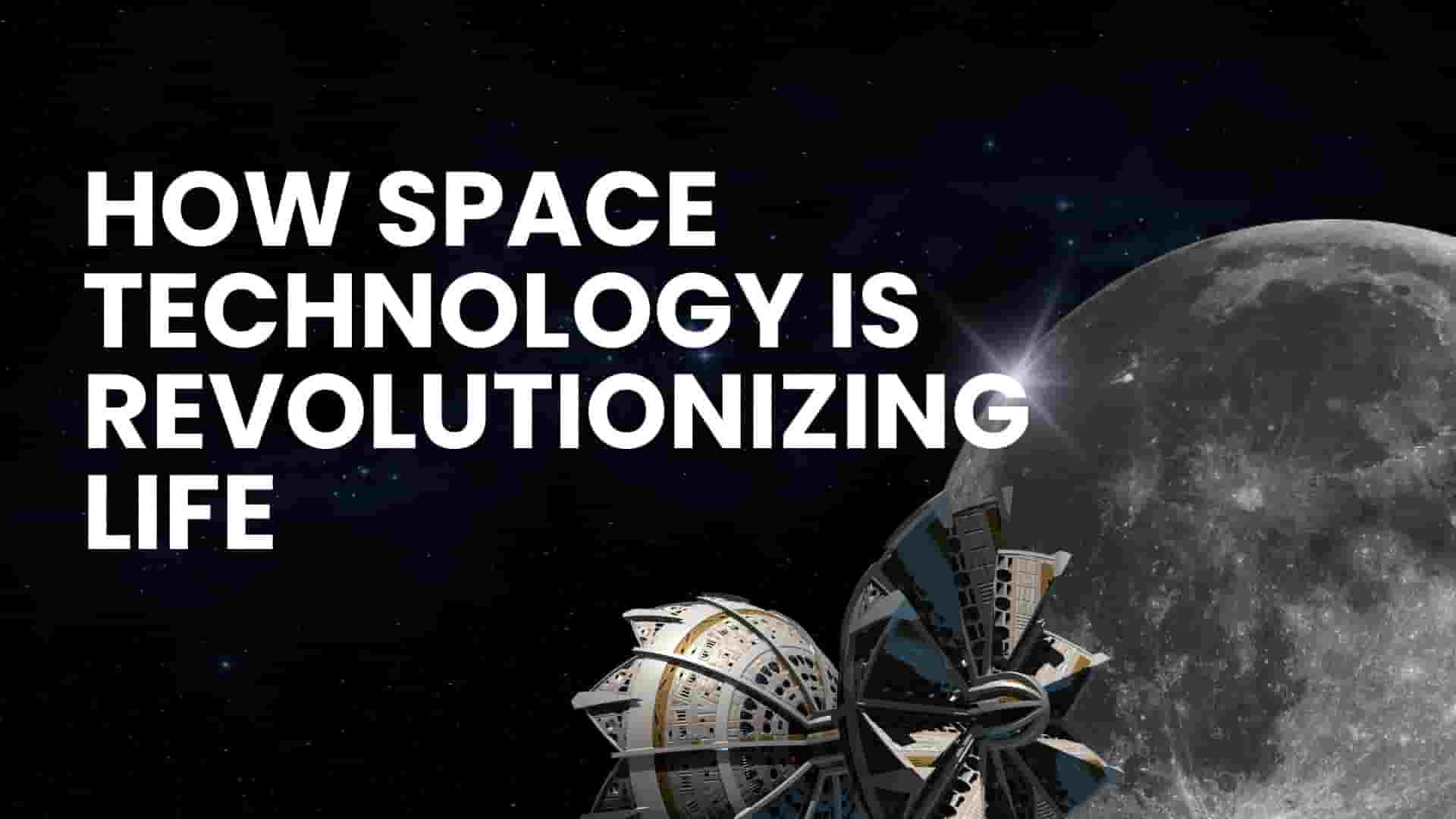The Final Frontier: How Space Technology is Revolutionizing Life on Earth
Have you ever gazed up at a starry night sky and wondered what’s really out there? Perhaps you’ve watched a rocket launch, hearts pounding as it punches through the clouds, and thought, “That’s incredible, but what does it have to do with me?” Well, what if I told you that the technology propelling us to the cosmos is also transforming your daily life in the most unexpected ways?
That smartphone in your pocket, the weather forecast you checked this morning, the GPS guiding your road trip—all are touched by the magic of space technology. It’s not just about astronauts and distant planets; it’s a multi-billion dollar engine of innovation that’s improving life for every single person on Earth, from kids in classrooms to grandparents’ video-calling their families. Buckle up, because we’re about to blast off on a journey to explore how the final frontier is reshaping our world, making the seemingly impossible, possible.
What is Space Technology?
At its core, space technology is exactly what it sounds like: the application of engineering and science to create systems for travel and use beyond Earth’s atmosphere. But it’s so much more than just rockets. This vast field encompasses everything from the satellites circling our planet to the rovers trundling across Mars, and the sophisticated software that makes it all possible.
The journey of modern space technology began in earnest with the Space Race of the mid-20th century, a period of intense competition that gave us iconic moments like the Apollo moon landings. Back then, it was largely the domain of government agencies like NASA and Roscosmos. Today, the landscape has dramatically shifted. We’re in the era of New Space, characterized by private companies like SpaceX, Blue Origin, and Rocket Lab driving down costs and accelerating innovation through reusable rockets and smaller, more powerful satellites. This democratization of space means we’re no longer just visitors; we’re becoming a spacefaring civilization.
Read more: Educational Technology: Best Insights Revolution 2025
Mind-Blowing Modern Space Tech
🚀 Reusable Rocket Revolution
The single biggest game-changer in recent years has been the development of reusable rockets. Companies like SpaceX have mastered the art of landing rocket boosters back on Earth, both on land and on autonomous drone ships in the ocean. This incredible feat, which looks like something out of a sci-fi movie, has slashed the cost of access to space by orders of magnitude, opening the floodgates for new research, commerce, and exploration.
🛰️ SmallSats & Mega-Constellations
Gone are the days when all satellites were school-bus-sized behemoths. Today, Small Sats—especially CubeSats, no bigger than a shoebox—are revolutionizing space technology. Companies are launching constellations of thousands of these mini-satellites to provide global high-speed internet coverage (like Starlink), monitor climate change, and track shipping logistics from space. This allows for more frequent updates and a more detailed view of our planet than ever before.

🤖 AI & Robotics in Space
Modern missions rely heavily on artificial intelligence and advanced robotics. The Perseverance rover on Mars uses AI to autonomously navigate treacherous terrain and select interesting rock samples to study. AI algorithms also help manage the immense data flow from telescopes and satellites, identifying patterns that would be impossible for humans to find alone. This synergy of space technology and AI is pushing the boundaries of what we can discover.
🧪 In-Situ Resource Utilization (ISRU)
This is a fancy term for “living off the land” in space. ISRU is the technology that will allow us to be truly sustainable beyond Earth. Experiments are underway to extract water from lunar soil or produce oxygen from the Martian atmosphere. NASA’s Artemis program is heavily invested in ISRU, as it is the key to establishing a permanent human presence on the Moon and eventually sending humans to Mars.
Read more: Wikipedia: space technology
Table: Space Technology Then vs. Now
| Aspect | Then (20th Century) | Now (21st Century) |
|---|---|---|
| Primary Players | Government agencies | Private companies & agencies |
| Cost to Orbit | Extremely High (~$65,000/kg) | Falling Rapidly (~$1,500/kg) |
| Satellites | Large, few, expensive | Small, many, affordable |
| Goal | Flags and footprints | Sustainability and settlement |
| Key Innovation | Getting to space | Reusing and staying in space |
Space Tech in Your Daily Life
You don’t need a spacesuit to benefit from space technology. Its spin-offs are seamlessly woven into the fabric of your everyday routine:
- Navigation & Travel: Your GPS (or GNSS) relies on a precise network of satellites orbiting Earth. Every time you use Google Maps, order a ride-share, or track a delivery, you’re using space technology.
- Weather Forecasting: Modern weather prediction depends on satellite data. They monitor storms, track hurricanes, measure atmospheric temperatures, and save countless lives by providing early warnings for severe weather events.
- Communications: Satellites enable global live news broadcasts, long-distance phone calls, and internet access in remote areas. They connect the world in ways undersea cables simply cannot.
- Healthcare & Medicine: Digital image analysis used in CAT scanners and MRIs originated from technology developed to enhance moon pictures. Advanced materials for braces and artificial limbs were also derived from space research.
- Consumer Goods: From memory foam mattresses and scratch-resistant lenses to wireless headsets and improved baby formula, countless inventions have roots in NASA’s need to solve problems for astronauts.
The Business of the Cosmos
The space economy is booming and is projected to be worth over $1 trillion by 2040. This isn’t just about launching rockets; it’s about the vast ecosystem of services and industries they enable. Space technology is a powerful economic driver, creating high-skilled jobs and fostering new markets. Key areas include:
- Earth Observation: Companies sell data on agricultural health, deforestation, urban planning, and disaster response.
- Telecommunications: Providing global broadband internet is one of the largest and most competitive new markets.
- Space Tourism: While still in its infancy, companies like Virgin Galactic and Blue Origin are opening the door for civilian trips to the edge of space.
- Resource Mining: The future possibility of mining asteroids for precious metals and water is already attracting significant investment and research.

Challenges: It’s Rocket Science
The path to the stars isn’t without its obstacles. Space technology faces significant hurdles:
- Space Debris: With thousands of satellites and spent rocket parts in orbit, space junk poses a serious collision risk to active missions and the International Space Station. Developing effective space debris removal technologies is a critical priority.
- Cost & Sustainability: While costs are falling, spaceflight remains incredibly expensive. Making it truly sustainable and accessible is an ongoing challenge.
- Human Factors: Protecting astronauts from radiation, the effects of microgravity on the human body, and the psychological challenges of long-duration missions are complex problems that space technology must solve for deep space exploration.
The Future is in Orbit
The next decade of space technology promises to be even more revolutionary. We’re looking at establishing a sustainable human presence on the Moon through programs like Artemis, which will serve as a proving ground for the eventual human mission to Mars. Advanced space telescopes like the James Webb Space Telescope’s successor will peer further back in time than ever before. The concept of in-space manufacturing, building things in the microgravity environment of orbit, could lead to the creation of new alloys and medicines impossible to make on Earth.
Conclusion: Our Interplanetary Destiny
Space technology is far more than a narrative of exploration; it is a testament to human ingenuity and its unwavering drive to push boundaries. From the satellites that connect us to the medical advancements that heal us, its impact is profound and personal. It solves critical problems on Earth while simultaneously answering fundamental questions about our universe and our place within it. As this technology continues to evolve, becoming more accessible and powerful, it promises a future where the resources of the solar system can help solve global challenges and where humanity grows from a single-planet species to an interplanetary one. The journey is just beginning, and everyone has a front-row seat.
Read more: Institute of Space Technology, Islamabad.
Frequently Asked Questions
What is the most important space technology today?
Reusable rocket technology is arguably the most transformative. By drastically reducing the cost of reaching orbit, it has democratized access to space, enabling more satellites, research, and commercial ventures than ever before.
How does space technology help the environment?
Satellites are vital for monitoring climate change. They track global temperatures, ice melt, sea-level rise, and greenhouse gas emissions. This data is crucial for scientists and policymakers to understand and mitigate environmental damage.
Can space technology become affordable for all countries?
Yes, with the rise of small satellites and ride-share missions, where multiple payloads launch on one rocket, access to space is becoming more affordable. This allows smaller countries and even universities to participate in space exploration.
What is the biggest problem in space technology?
Space debris is a critical and growing problem. Thousands of pieces of defunct satellites and rocket parts clutter Earth’s orbit, posing a major collision risk to functioning spacecraft and the International Space Station.
Will humans live on Mars using current space technology?
Not with current technology alone. While we have the launch capability, we need advanced life support systems for the long journey and to sustainably survive on Mars, which has a thin, toxic atmosphere and no magnetic field.

